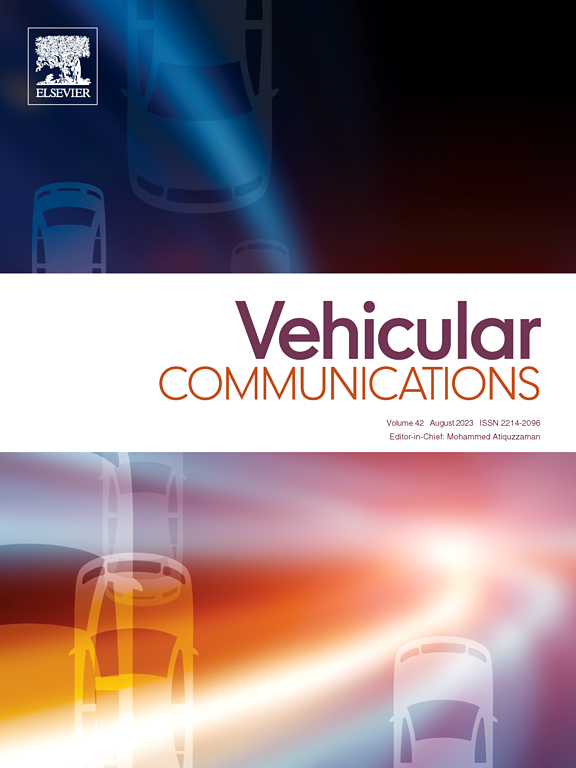无人驾驶飞行器网络中的资源分配:综述
IF 6.5
2区 计算机科学
Q1 TELECOMMUNICATIONS
引用次数: 0
摘要
目前,无人机的资源配置是实业家和研究人员讨论的一个重要话题。考虑到无人机的不同新兴应用,如果资源分配问题得不到有效解决,未来的无人机应用将无法达到其提出的目的。尽管有许多不同的研究工作解决了无人机的资源分配,但显然缺乏一个全面的调查描述和分析现有的方法。为了解决这一研究差距,我们对无人机中的资源分配进行了广泛的回顾。在这项工作中,我们基于四个标准对现有的研究工作进行分类:基于优化目标的分类、基于数学模型的分类、基于博弈论框架的分类和基于机器学习模型的分类。研究结果表明,求解无人机资源分配问题的数学模型得到了相对较多的探索。研究人员探索了多种博弈论技术,如Stackelberg模型、平均场博弈论、合作博弈论等,以优化无人机的资源配置。与其他优化目标相比,能量和吞吐量因素的优化在文献中更为常见。我们还观察到,与所有其他基于机器学习的方法相比,强化学习技术是一种被大量利用的无人机资源分配技术。我们还提出了无人机资源分配领域的几个挑战和未来的工作。本文章由计算机程序翻译,如有差异,请以英文原文为准。
Resource allocation in unmanned aerial vehicle networks: A review
Currently, resource allocation in Unmanned Aerial Vehicles (UAVs) is a major topic of discussion among industrialists and researchers. Considering the different emerging applications of UAVs, if the resource allocation problem is not addressed effectively, the upcoming UAV applications will not serve their proposed purpose. Although there are numerous and diverse research works addressing the resource allocation in UAVs, there is an evident lack of a comprehensive survey describing and analyzing the existing methods. Addressing this research gap, we present an extensive review of the resource allocation in UAVs. In this work, we classify the existing research works based on four criteria - optimization goal-based classification, mathematical model-based classification, game theory framework-based classification, and machine learning model-based classification. Our findings revealed that the mathematical models are relatively more explored to solve the resource allocation problem in UAVs. Researchers have explored a variety of game theory techniques, like the Stackelberg model, mean-field game theory, cooperative games, etc., for optimized resource allocation in UAVs. The optimization of energy and throughput factors is more seen in the literature compared to the other optimization goals. We also observed that the reinforcement learning technique is a heavily exploited technique for resource allocation in UAVs compared to all other machine learning-based methods. We have also presented several challenges and future works in the field of resource allocation in UAVs.
求助全文
通过发布文献求助,成功后即可免费获取论文全文。
去求助
来源期刊

Vehicular Communications
Engineering-Electrical and Electronic Engineering
CiteScore
12.70
自引率
10.40%
发文量
88
审稿时长
62 days
期刊介绍:
Vehicular communications is a growing area of communications between vehicles and including roadside communication infrastructure. Advances in wireless communications are making possible sharing of information through real time communications between vehicles and infrastructure. This has led to applications to increase safety of vehicles and communication between passengers and the Internet. Standardization efforts on vehicular communication are also underway to make vehicular transportation safer, greener and easier.
The aim of the journal is to publish high quality peer–reviewed papers in the area of vehicular communications. The scope encompasses all types of communications involving vehicles, including vehicle–to–vehicle and vehicle–to–infrastructure. The scope includes (but not limited to) the following topics related to vehicular communications:
Vehicle to vehicle and vehicle to infrastructure communications
Channel modelling, modulating and coding
Congestion Control and scalability issues
Protocol design, testing and verification
Routing in vehicular networks
Security issues and countermeasures
Deployment and field testing
Reducing energy consumption and enhancing safety of vehicles
Wireless in–car networks
Data collection and dissemination methods
Mobility and handover issues
Safety and driver assistance applications
UAV
Underwater communications
Autonomous cooperative driving
Social networks
Internet of vehicles
Standardization of protocols.
 求助内容:
求助内容: 应助结果提醒方式:
应助结果提醒方式:


